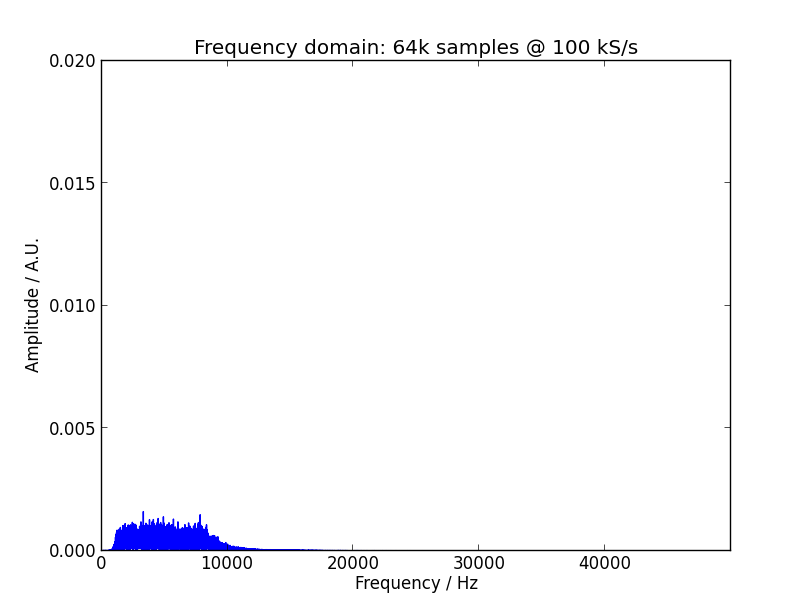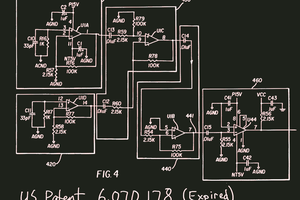A quick and dirty introduction to the PyPPM
Here are a couple short summaries of the "what" and "why" behind my PyPPM project.
Still interested? Awesome! Read on, friend...
How an Earth's Field NMR (EFNMR) experiment works
The first-revision PyPPM operates using the Varian-Packard method, named after the two inventors. (For information on the second-revision operating scheme, keep reading further down in the details)
Using the Varian-Packard method, an EFNMR experiment can be boiled down into three stages: polarization, quenching, and acquisition...
- Polarization: During this first stage, the sensor coil is connected (via a relay) to a constant current sink that maintains a current of roughly 2 Amps. The sample in the sensor coil develops a magnetic polarization that increases exponentially in time, with a time constant of a few seconds (T1). This stage usually lasts about five to ten seconds, depending on the amount of polarization required to achieve the desired signal amplitude.
- Quenching: This is the most critical step for a Varian-Packard design. The current sink is switched off, and the energy stored in the coil (and thus it's magnetic field) must be rapidly quenched. If the field is not quenched rapidly enough, the sample will not keep it's magnetic polarization, and there will be no signal. (More on this later)
- Acquisition: If everything went as planned up to this point, the sensor coil is connected (via the same relay) to an analog signal chain that provides 110 dB of amplification over a 3 kHz bandwidth centered around 2 kHz. The amplified signal is digitized and sent via USB to the host computer for further processing.
The entire scheme is shown graphically below.

And a few final notes...
Polarization dead-times: The astute reader will notice that there is a short dead-time between relay switching and turn-on/turn-off of the current sink. This allows the fragile relay contacts to move between positions without having to worry about arcing due to unquenched inductor current.
Acquisition dead-time: A second dead-time is placed after the polarization stage of the experiment to give the relay contacts even more time to stop chattering before the low-voltage signal is acquired through the analog signal chain.
Recycle delay: This is a feature to satisfy the chemist in me. If multiple scans (polarize, quench, acquire) are performed in order to increase the signal-to-noise ratio of the final signal, the device is should wait a bit between scans, both to let the coil cool and to allow the sample to return to its equilibrium state.
PyPPM Hardware system-level overview (a.k.a. first revision System Design Doc)

Sensor coil: The sensor coil is arguably the most critical component of an EFNMR system. It's inductance and resistance determine how fast it can be switched on and off, how much current it can carry, and how sensitively it can detect the weak oscillating magnetic field produced by the sample.
The current sensor coil design (rev 1.0) in the PyPPM is a 10.2 cm long solenoid wound around a 5.0 cm diameter PVC pipe. The solenoid has four layers of 158 turns each, totaling to 632 turns of AWG 22 enameled copper wire. The solenoid has an approximate inductance of 7.5 mH and a resistance of 5.5 Ohms.
Future versions of the sensor coil will focus on providing a level of humbucking to minimize the amount of electrical interference that is received during acquisition. The current coil easily detects the 30th harmonic of 60 Hz mains wiring from hundreds of feet!
Sensor relay: The relay switches the sensor coil between the polarization circuit and the acquisition circuit. A small-signal DPDT relay (Omron G6A) was chosen to ensure galvanic isolation between the low-noise analog signal chain and the noisy polarization circuitry.
Polarization battery: The current design of the PyPPM admits any DC voltage source under 15 V, battery or otherwise. However, this voltage source must be able to maintain several Amps of current for several seconds....
Read more » Bradley Worley
Bradley Worley
















 jaromir.sukuba
jaromir.sukuba
 Tom Anderson
Tom Anderson

 The Big One
The Big One
Hi
Nice to meet you after viewing your profile i am Jacinda, from (jakarta) indonesia,
i have a project discussion with you please email me on: (jacinda.seiler@yahoo.com)